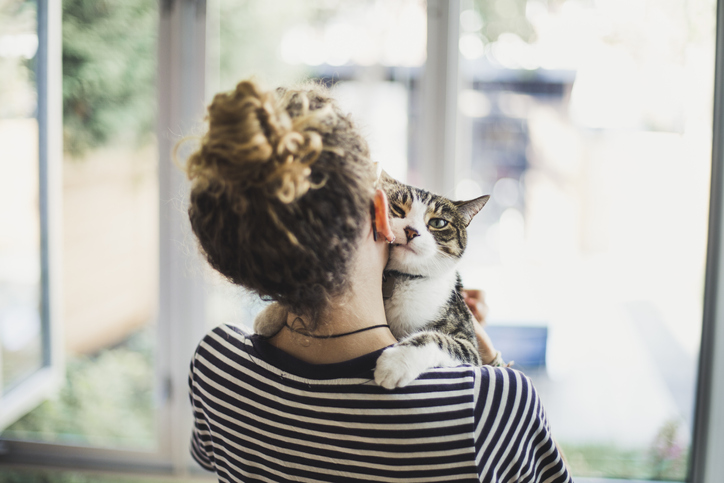Educational Articles
-
Once a pet has lost some weight, the new goal is to make sure that excess weight stays off. Pet parents who partner with their veterinary health care team for support and who focus on changing their behaviors often have the most success. Examples of some changes include using a different food or a different feeding method, focusing more on portion control, and incorporating some movement or activity time into each day. This article addresses several commonly asked questions about how to help a pet during the maintenance phase (after the weight has been lost).
-
Bacterial overgrowth is a condition of the small intestine resulting in increased numbers of bowel bacteria. The major concern with bacterial overgrowth is the development of a condition called small intestinal bacterial overgrowth. The bacteria cause damage to the surface of the bowel so digested food cannot be absorbed resulting in malabsorption of nutrients. Malabsorption and SIBO both result in diarrhea but with bacterial overgrowth the diarrhea is chronic. Many cases respond to long term antibiotics.
-
There are several different types of malignant mammary tumors, with carcinomas being the most common. Carcinomas arise from epithelial (skin) cells, tubules of the mammary glands, or other cells found in the mammary chain. The size of the masses and their appearance may vary, but they are usually firm and nodular. Occasionally, the skin over the mass may ulcerate (open) and bleed, and the affected area may feel warm to the touch and become painful. Detecting and treating these tumors when they are small, and before spread has occurred, will provide your dog with the best chance for long-term control.
-
Cats have four types of teeth: incisors, canines, premolars, and molars. Skeletal malocclusion results when an abnormal jaw length creates a malalignment of the teeth. Dental malocclusion occurs when the upper and lower jaw lengths are considered normal but one or more teeth are out of normal alignment. This article explains the common forms of skeletal and dental malocclusion seen in cats.
-
Dogs have four types of teeth: incisors, canines, premolars, and molars. Skeletal malocclusion results when an abnormal jaw length creates a malalignment of the teeth. Dental malocclusion occurs when the upper and lower jaw lengths are considered normal but one or more teeth are out of normal alignment. This article explains the common forms of skeletal and dental malocclusion seen in dogs.
-
Glamorous and sweet, gentle and spirited, the Maltese has a long history as a treasured lap dog, sleeve dog, and close personal companion, especially to ladies at court. It is not hard to see why - the Maltese has the look of a tiny white angel and the manners to match.
-
A mammary tumor develops because of abnormal replication of the cells that make up the breast tissue. In cats, most mammary tumors (80-96%) are malignant. Sexually intact cats have a seven-fold increased risk for mammary tumors compared to spayed cats. Detecting and treating these tumors when they are small, and prior to metastasis, provides your cat with the best chance of long-term control. Surgery is by far the best treatment and, given the high metastatic rate in these tumors, chemotherapy is typically pursued afterward.
-
Good management is the key to preventing or controlling the spread of disease. Good management practices aim to keep horses in good condition and in a healthy environment, in order to reduce the risk of introduction and spread of disease, to identify individuals especially at risk and to promote rapid recovery if disease does occur.
-
Feral cats are fiercely independent and survive (but may not thrive) without the help of humans. They avoid people and hide, back away, or flee when they spot humans. Lack of immunization, parasite control, adequate nutrition, and hygiene put feral cats at risk of many life-threatening problems. TNR (Trap, Neuter, and Release) programs are the hallmark of controlling feral cat populations.
-
Sleek and handsome in black-and-tan with his whip-like tail and his prick ears, the Manchester Terrier is one of the original terriers, and carries himself with all the majesty and confidence befitting an aristocrat. Even so, the Manchester is not above a good hard chase after a critter, and most will curl warmly into the laps of their favorite people so you can admire them up close, of course.


